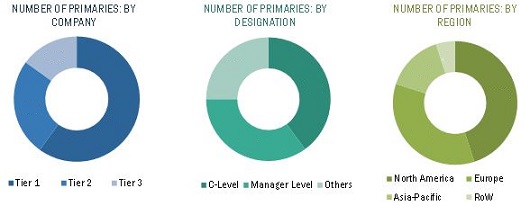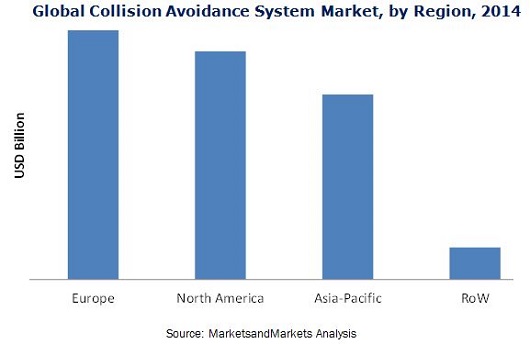A collision avoidance system helps in avoiding collision of two vehicles or mitigates the consequences of an imminent collision. It finds applications in several industries such as automotive, aerospace, railway, marine, and construction & mining. In all applications, collision avoidance systems avoid collisions either by issuing a warning to an operator or performing an autonomous avoidance maneuver. However, depending on application and the type of action considered, the metric for measuring the threat of collision and the decision making algorithm might vary significantly.
The market for collision avoidance systems was valued at USD 31.19 billion in 2014 and is expected to grow at a CAGR of 7.74% between 2015 and 2020. The key drivers contributing to the growth of the market primarily include the growing focus of consumers and OEMs on safety features of vehicles, government regulations, influence of the New Car Assessment Programs (NCAPs) on customers, and encouragement from insurance companies by reducing the premium for vehicles with collision avoidance systems.
The automotive application segment was the largest application area for this market in 2014. Collision avoidance systems are becoming mandatory in automotive and construction & mining sectors and this is expected to drive the growth of the collision avoidance system market at a significant rate between 2015 and 2020, especially in developing economies. However, the market for collision avoidance systems is expected to grow at a considerable rate in aerospace, railway, and marine sectors during the forecast period.
Europe accounted for the largest market with a share of 35.89% of the global collision avoidance system market in 2014 due to strict regulations mandating the installation of certain collision avoidance systems, such as electronic stability control (ESC) and tire pressure monitoring system (TPMS) in the automotive sector. Furthermore, in December 2011, the European commission mandated all new aircraft above 5,700 kg maximum take-off mass or a maximum passenger seating capacity of more than 19 equipped with the ACAS II version 7.1 by December 1, 2015. These mandates would help the market for collision avoidance systems in Europe to grow at a significant rate during the forecast period. North America is expected to potential market growth in automotive, railway, and construction & mining sectors during the forecast period. Asia-Pacific is expected to a significant growth potential for collision avoidance systems in automotive, construction & mining sectors during the forecast period.


